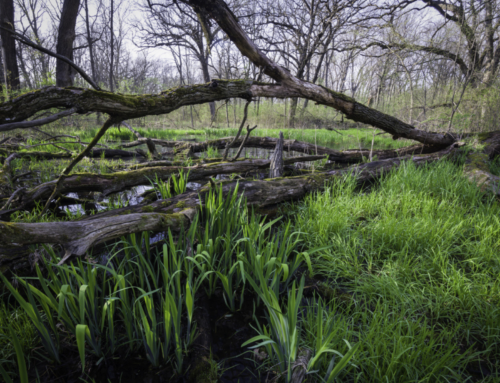Mike Kline Director Watershed Management Division River Management Program 1 National Life Drive, Main 2 Montpelier VT 05620-3522
September 19, 2013
Dear Mike:
These are the overview comments by CRC on Stream Alteration draft Rule. CRC supports the draft rule as presented and we offer the following comments to clarify the rules intent.
Introduction
We welcome the education statements at the start of the rule such as:
Streams move by nature, changing in elevation, shape, and location over time. Stream change occurs through natural stream processes primarily during high runoff events when deeper water has the power to erode and deposit the bed and banks of a stream.
It is the policy of the State to promote and protect the natural maintenance and natural restoration of dynamic equilibrium conditions and to minimize fluvial erosion hazards.
We do hope though that the policy does not give an absolute priority for the built environment over the stream environment. Without that balance, then will all situations where a built environment exists require that:
…….. stream reaches must be managed in a non-equilibrium condition to protect pre-existing improved property.
This Rule acknowledges the tension in some circumstances between threats to life and existing property and the policy of establishing and maintaining stream equilibrium conditions and connectivity to protect fish and aquatic life.
In the effort to avoid future flood damage, there are situations where destroyed infrastructure and personal property should move in order to avoid manipulating the natural stream. CRC hopes that not all existing infrastructure is equated with being required to be in that flooded location. There should be a balancing of what is good for the stream and what is good for the built environment. CRC hopes that there will be a reasonable balancing test applied prior to issuing an individual permit.
Definitions
In the definition of a flood hazard, it is important to recognize in this definition that streams move laterally and that people should recognize that reality when they are planning investments in infrastructure and authorizing development in a flood hazard area. So in §27-102 Policy (a) insert the word lateral before the word location.
The Imminent threat wording is not clear. The language seems to say that with or without an impending high water event, a local official could authorize in stream work. Since it is unclear, what else other than existing or impending high water should trigger in stream activity the language authorizes instream work for no reason. So in §27-201 Definitions 29) remove with or without an impending high flow event.
§27-301 Applicability 3 Flood Hazard Areas the language should end at 1% or greater chance because language is important and the official policy of the state should no longer be using the phrase “100 year flood.” People misunderstand this phrase, in that once a 100-year flood happens, everyone takes a deep breath and thinks well that is it for the next 100 years. The 1% concept would seem to be an important distinction for the rule to communicate.
In §27-402 (b), CRC strongly supports the inclusion of equilibrium and connectivity standards. These standards have been too long missing from the official policy of the state.
§27-504 Duration of General Permit The language for the duration of a general permit should make it clear that an individual project permit is not for 5 years but is ongoing once approved by ANR. The overarching general permit that sets the standards for in stream activity lasts for 5 years. It is hard to glean that from the language in the rule.
This may not be a topic for the rule itself but ANR should make clear how they would inform people about the standards that exist under the non- reporting and general permit activities, especially under the non-reporting standards and practices. The rule content should be broadly circulated taking full advantage of communication networks that exist such as the ANR web site, VLCT, CRJC, CRC, VNRC and the RPCs.
§27-702, §27-703 Imminent threat and any approved reaction to the threat is difficult to spell out in words but the rule seems to assume that local officials who can authorize in stream work, material removal or berming know how to quantify the threat and the best, most effective and least damaging to the river response to that threat.
CRC knows that ANR has staff constraints but the expertise embodied in the ANR personnel is needed in these situations. Because of the staff constraint, direct face-to-face meetings on site may not always be possible but there should be some statement in the rule that there is an expectation of contact with stream alteration engineers and other ANR staff trained to make these evaluations of the threat and the response prior to instream work. The rule should say that such contact is required unless the Secretary waives that requirement.
The requirement that all work authorized by local officials should be conducted according to this rule supposes that the local official will have in their possession, have read and fully understand the rule. Some will, some will not. ANR should make a summary of requirements available to all local officials with approval authority under law through a direct mailing, have the rule posted on the ANR web site and ask cooperating organizations like VLCT, CRJC, CRC, VNRC and the RPCs to post the requirements on their web sites.
§27-704 Standards for Implementing Emergency Protective Measures (a) through (f) In the age of electronic pictures, a record of the problem and then all work at progressive stages should be required to be part of the permanent record of any in stream work.
§27-705 Public Notice In our experience, after TS Irene people became concerned about instream work whether or not ANR had approved the work. Most people will not approach a machine operator and ask to see a permit or other authorization but will call a known source about any problems they perceive on the job. Such an event might set off a call to CRC that will then call you and the observer might call you as well and one of the stream alteration engineers who then gets a call from CRC and you, etc. etc. etc so that one incident generates 5-6 phone calls. It might be helpful for there to be a clear physical indicator that the work is taking place with authorization from ANR. A big blue sign with a large white P on it posted at or near the work site could answer many questions for anyone concerned about the work.
Thank you for the opportunity to comment on the draft rule. CRC strongly supports these vast improvements to the stream alteration regulations.
Sincerely
David L. Deen, River Steward
Connecticut River Watershed Council 15 Bank Row Greenfield, MA 01301






